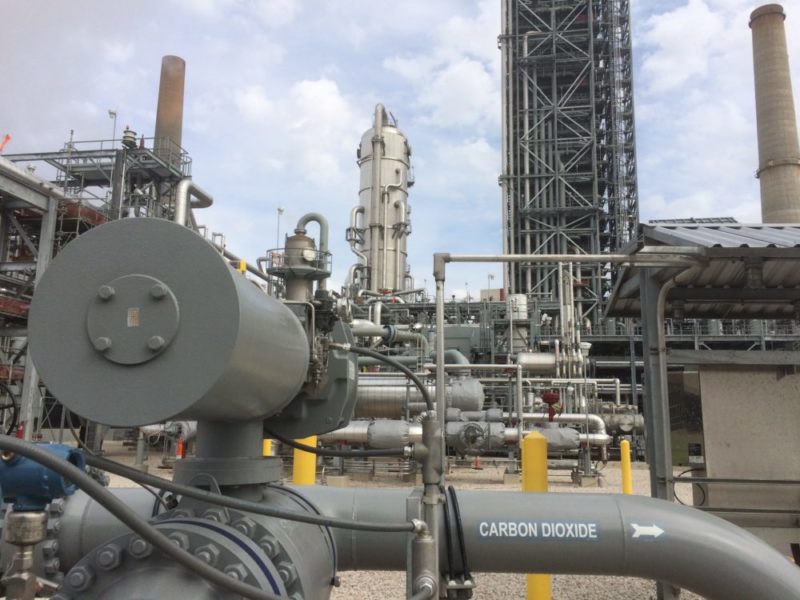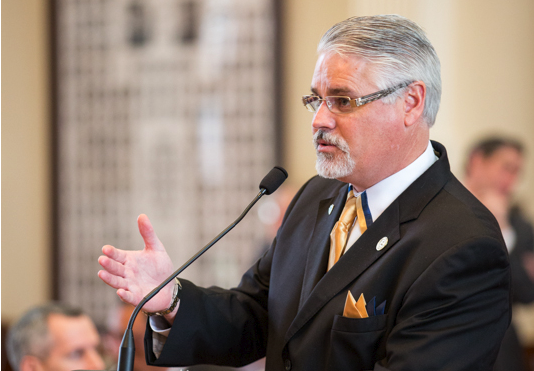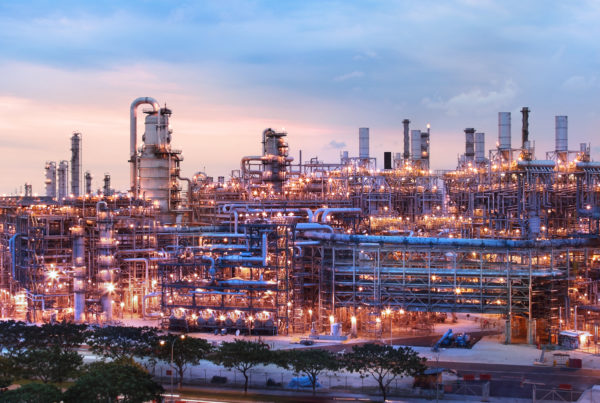From Houston Public Media.
At a recent ribbon-cutting of the Petra Nova carbon capture system at NRG’s W.A. Parish coal power plant near Sugar Land, Texas, Gov. Greg Abbott compared it to the first Texas oil boom in 1901.
“116 years after Spindletop, Texas is once again the epicenter of energy innovation,” he said. “We see that innovation right here at Petra Nova.”
NRG and its partners developed the first carbon capture system at a commercial coal power plant.
It captures about 40 percent of the CO2 that’s produced by one of the plant’s four carbon power units.
That CO2 is piped to the West Ranch oil field 80 miles southwest of here. There, it’s injected into the ground and used to extract oil in a method called Enhanced Oil Recovery.
So far, NRG said they’ve kept more than 330,000 tons of CO2 from the air, and daily oil production at West Ranch has increased tenfold.
In other words, it’s a win-win, according to Perry.
“It shows we don’t have to pit the environment on one side and the economy on the other side,” he said. “We can and we will be good stewards of both.”
That all sounds great. But Ramanan Krishnamoorti, chief energy officer at the University of Houston, thinks it’s too little too late.
He said coal simply faces too much competition from other sources of energy.
“The fact that natural gas prices got decoupled from oil, natural gas prices are ridiculously low – supply is in large excess – and you’ve got wind and solar that are starting to become competitive and the horizon for them looking even more competitive with time,” he said. “That’s what makes me look at it from a purely economical perspective and question its applicability in the United States.”
David Knox, NRG spokesman in Houston, responds that while natural gas and renewables are becoming more important, coal is still a big part of the energy mix.
“There are coal plants that are closing down, but there are coal plants that are going to be running for another 20 or 30 years and maybe longer,” he said. “So it’s critical that unless we want to have a ton of carbon going into the atmosphere for every megawatt hour that a coal plant generates, we got to do something about that.”
Both agree that on a global scale, carbon capture is useful and necessary because in many countries coal is still king.
But with all the talk about CO2 and global warming, we may forget how pollutants from coal power plants affect their communities.
That’s what Adrian Shelley argues.
He’s the director of the Texas branch of Public Citizen, an advocacy group that among other topics is concerned about environmental issues. He was previously with Air Alliance Houston.
Shelley said NRG’s W.A. Parish plant is the biggest polluter in Greater Houston when it comes to contaminants like sulfur dioxide and soot, and toxins like mercury and arsenic.
“So while we are, again, interested in projects that reduce carbon emissions, the W.A. Parish plant is a real health hazard in the community where it’s located and really for all of the Greater Houston region,” he said. “And that’s our big concern.”
He said the billion dollars for the carbon capture system would have been better used to install “scrubbers” on the other three units of the power plant, which remove sulfur dioxide.
Currently, this only happens at the unit where the CO2 is captured.
Knox said that would simply not work out economically and shut the plant down.
Of course, that’s what Shelley would like to see.
He said it’s time for coal power plants to make way for renewables.















